#s. john launer
Text
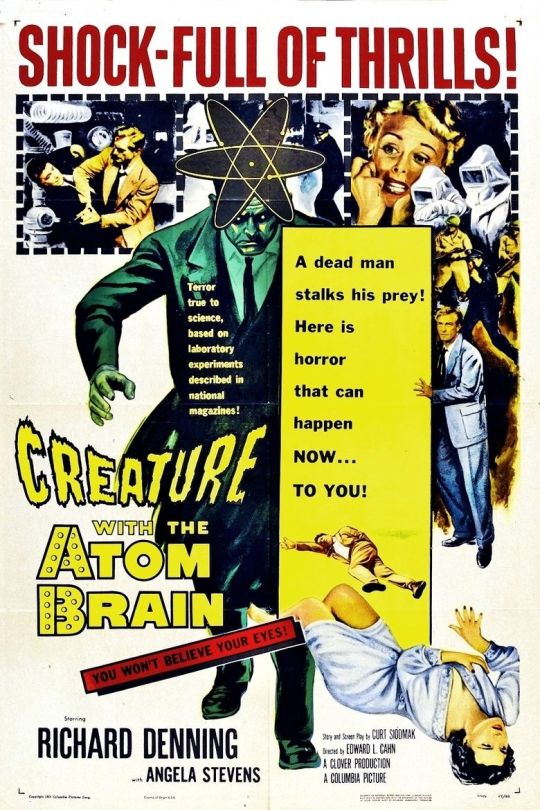
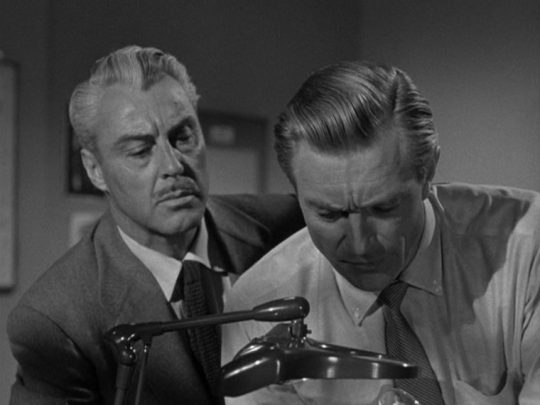
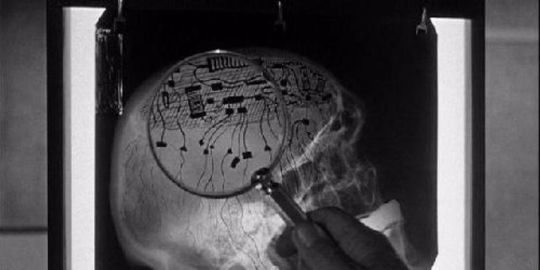

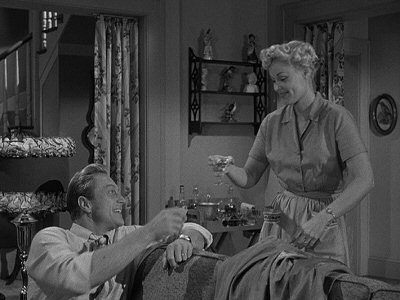




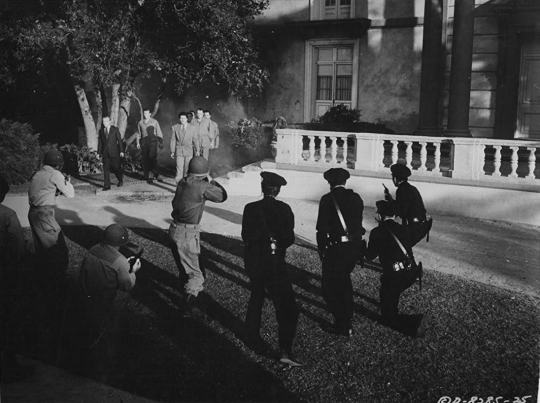
Creature with the Atom Brain (1955)
"Can't you keep him going any longer?"
"No, I can't keep them breathing longer than a few days, then the glands deteriorate. They just disintegrate."
"Is he dead?"
"He never was alive."
#creature with the atom brain#b movie#american cinema#creature feature#sam katzman#edward l. cahn#curt siodmak#richard denning#angela stevens#s. john launer#michael granger#gregory gaye#linda bennett#tristram coffin#charles evans#pierre watkin#lane chandler#george bruggeman#harry lauter#larry j. blake#noir informed creature feature from the halcyon days of atom age terror; full of very questionable science and technobabble about the#reanimation of matter. works best in the first half‚ as a sci fi tinged murder mystery caper. once it all goes a little apocalyptic things#start to fall apart (the finále is disappointingly staged in such chaos that the showdown between the military and the radioactive zombie#men feels more like a half hearted brawl at a local sporting event). Siodmak provides a typically sharp script with a nice line in#office banter between the police doctor lead and his best cop pal; also typical for Siodmak‚ there's a vein of casual sexism that runs#throughout‚ with Doctor Cop repeatedly reminding his wife that his work is no business of hers‚ and anyway‚ hasn't she made his dinner yet?#the actual horror is pretty well staged in shadow and cutaway; there's a back breaking in the opening scene which is all the more horrific#for being done entirely in silhouette. it all gets a bit silly once the dead gus start causing plane crashes (how??) and Cahn has a habit#of recycling shots not just from other films‚ but from this actual film‚ within the same film. reaction shots of the dead advancing are#used repeatedly in a number of scenes. not an un fun experience‚ but there are better atom age horrors out there
6 notes
·
View notes
Text
CREATURE WITH THE ATOM BRAIN (1955) Reviews and free to watch online
‘Chock-full of thrills!’
Creature with the Atom Brain is a 1955 science fiction crime horror film about a mad scientist who uses ‘zombies’ to aid a gangster.
Directed by Edward L. Cahn (The Four Skulls of Jonathan Drake; Curse of the Faceless Man; It! The Terror from Beyond Space; Invasion of the Saucer Men; Zombies of Mora Tau; Voodoo Woman; The She-Creature) from a story and screenplay by Curt…
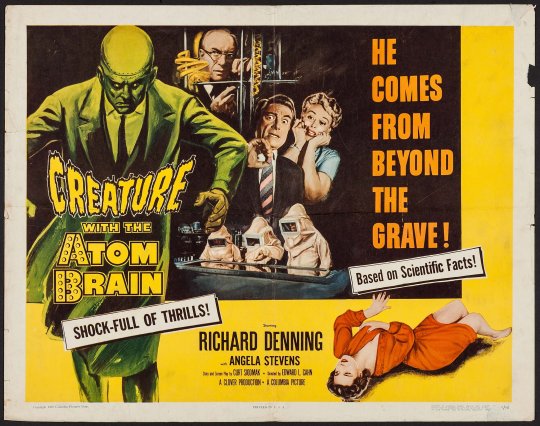
View On WordPress
#1955#Angela Stevens#Creature with the Atom Brain#Edward L. Cahn#free to watch on YouTube#free to watch online#movie film#review reviews#Richard Denning#S. John Launer#sci-fi horror
1 note
·
View note
Text
True or False Face
True or False Face
True or False Face / Holy Rat Race – Batman season 1
True or False Face – March 8 1966
False Face traps Batman and Robin, and binding them to a subway track just minutes before a train is scheduled to come by.
(more…)

View On WordPress
#1966#Adam West#Alan Napier#Batman#Burt Ward#Gary Owens#Madge Blake#Malachi Throne#Myrna Fahey#Neil Hamilton#S. John Launer#Stafford Repp
0 notes
Text
In 1945, in the Philippines campaign during World War II, Lt Fitzgerald was greatly troubled to learn that he had suddenly developed the ability to know who was about to die. ("The Purple Testament", Twilight Zone, TV)

#nerds yearbook#sci fi tv#paranormal#1945#wwii#ww2#world war 2#world war ii#tz#twilight zone#philippines#the purple testament#rod serling#richard l bare#dick york#barney phillips#paul mazursky#william reynolds#william phipps#s john launer#michael vandever#marc cavell#warren oates#ron masak#brad brown#john burnside#irvin zabo koszewski#robert mccord#gordon mitchell
4 notes
·
View notes
Text
I WAS A TEENAGE WEREWOLF (1957) – Episode 153 – Decades Of Horror: The Classic Era
“All right now, we’ll move in stagger fashion. We’ll circle the outer edges first and keep going round and round till we meet in the center.” And that’s called a “search grid?” Join this episode’s Grue-Crew – Chad Hunt, Daphne Monary-Ernsdorff, Doc Rotten, and Jeff Mohr – as they go for the winning combination of mad scientist and teenage angst in I Was a Teenage Werewolf (1957).
Decades of Horror: The Classic Era
Episode 153 – I Was a Teenage Werewolf (1957)
Join the Crew on the Gruesome Magazine YouTube channel!
Subscribe today! And click the alert to get notified of new content!
https://youtube.com/gruesomemagazine
ANNOUNCEMENT
Decades of Horror The Classic Era is partnering with THE CLASSIC SCI-FI MOVIE CHANNEL, THE CLASSIC HORROR MOVIE CHANNEL, and WICKED HORROR TV CHANNEL
Which all now include video episodes of The Classic Era!
Available on Roku, AppleTV, Amazon FireTV, AndroidTV, Online Website.
Across All OTT platforms, as well as mobile, tablet, and desktop.
https://classicscifichannel.com/; https://classichorrorchannel.com/; https://wickedhorrortv.com/
A troubled teenager seeks help through hypnotherapy, but his evil doctor uses him for regression experiments that transform him into a rampaging werewolf.
Director: Gene Fowler Jr.
Writers: Herman Cohen, Aben Kandel
Makeup Creator: Phillip Scheer
Selected Cast:
Michael Landon as Tony Rivers
Yvonne Lime as Arlene Logan
Whit Bissell as Dr. Alfred Brandon
Charles Willcox as Jimmy (as Tony Marshall)
Dawn Richard as Theresa
Barney Phillips as Detective Donovan
Ken Miller as Vic
Cynthia Chenault as Pearl (as Cindy Robbins)
Michael Rougas as Frank
Robert Griffin as Police Chief P.F. Baker
Joseph Mell as Dr. Hugo Wagner
Malcolm Atterbury as Charles Rivers
Eddie Marr as Doyle
Vladimir Sokoloff as Pepe the Janitor
Louise Lewis as Principal Ferguson
S. John Launer as Bill Logan (as John Launer)
Guy Williams as Officer Chris Stanley
Dorothy Crehan as Mrs. Mary Logan
A young Michael Landon, just a few years before rising to fame as “Little Joe” Cartwright in Bonanza, stars as Tony Rivers, a troubled teen struggling with anger management. Whit Bissell is featured as Dr. Alfred Brandon, a psychologist (or mad scientist) with ulterior motives. Yes! Oh, yes, indeed! It’s the AIP/Herman Cohen campy classic, I Was a Teenage Werewolf. The Grue-Crew is in full Drive-In Theater mode for this one.
High-quality versions of I Was a Teenage Werewolf, streaming or physical media, are not available, but there is a reason. Susan Hart, the actress and widow of AIP co-founder James Nicholson, owns the rights to eleven AIP films outright: It Conquered the World (1956) and its remake Zontar, The Thing from Venus (1966); Invasion of the Saucer Men (1957) and its remake The Eye Creatures (1965); I Was a Teenage Frankenstein (1957); I Was a Teenage Werewolf (1957); The Amazing Colossal Man (1957); Terror from the Year 5000 (1958); Apache Woman (1955); The Oklahoma Woman (1956); and Naked Paradise (1957). She frequently negotiates rights for merchandise and theatrical showings, but physical media has not been updated for release in decades. You can, however, purchase a VHS tape of the movie.
Gruesome Magazine’s Decades of Horror: The Classic Era records a new episode every two weeks. Up next in their very flexible schedule, as chosen by Chad, is The Wasp Woman (1959). Yes, they’re sticking with 1950s B-movies, but moving from AIP/Herman Cohen on to Film Group/Roger Corman!
Please let them know how they’re doing! They want to hear from you – the coolest, grooviest fans: leave them a message or leave a comment on the Gruesome Magazine YouTube channel, the site, or email the Decades of Horror: The Classic Era podcast hosts at [email protected]
To each of you from each of them, “Thank you so much for watching and listening!”
Check out this episode!
2 notes
·
View notes
Text




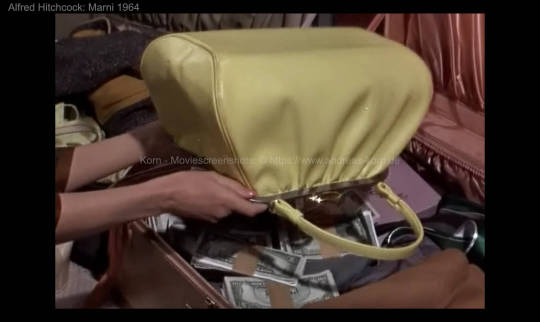



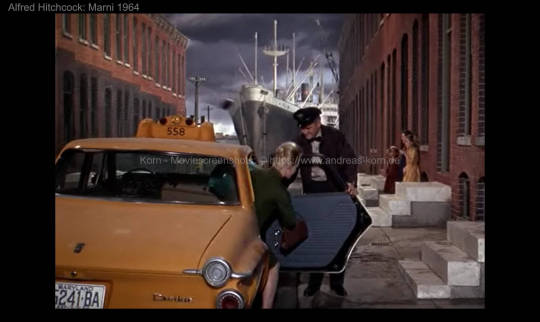
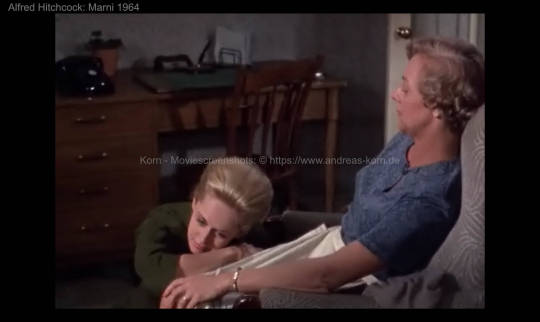
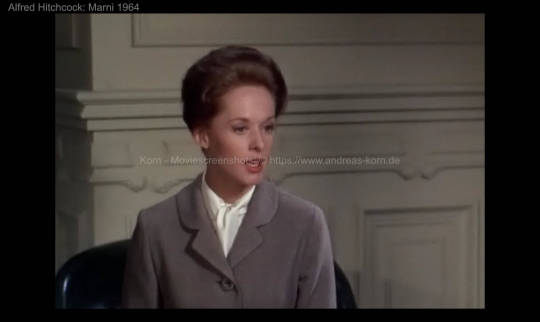

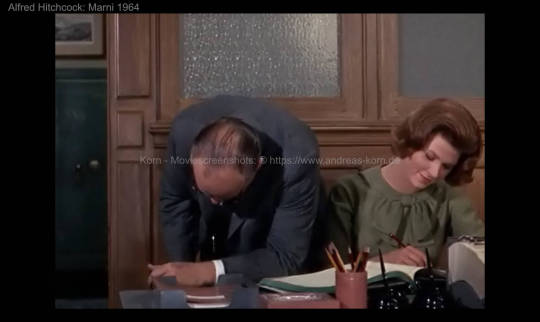


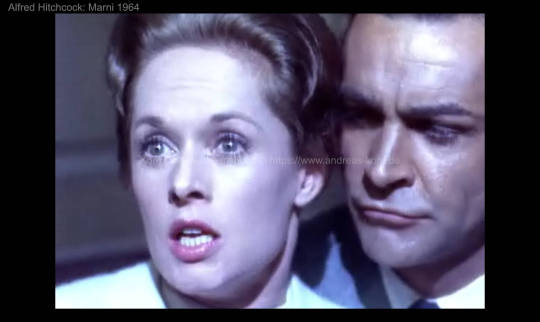


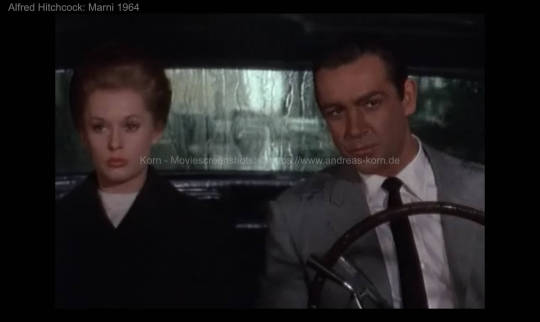
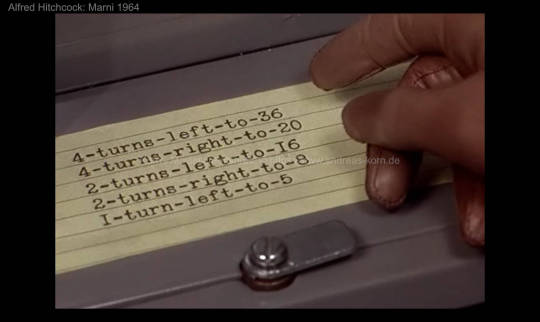
Marnie (USA 1964)
Regie: Alfred Hitchcock
Darsteller:
Tippi Hedren - Marnie Edgar
Sean Connery - Mark Rutland
Diane Baker - Lil Mainwaring
Louise Latham - Bernice Edgar
Martin Gabel - Mr. Sidney Strutt
Alan Napier - Mr. Rutland
Bob Sweeney - Cousin Bob, Anwalt
Milton Selzer - Mann auf der Rennbahn
Mariette Hartley - Ms. Clabon, Sekretärin
S. John Launer - Sam Ward, Büroleiter
Bruce Dern - Matrose
uva.
———————-
Movie Screenshots wichtiger Schlüsselszenen:
Selektion: Dr. Andreas Korn (Set 1; Abb. 01-20)
07.08.2023
* * *
0 notes
Text

Chris: Saw this on Svengoolie and it is mostly a borefest, very little redeeming for this film but Svengoolie was very entertaining with extra bits, but this film, Avoid.
Richie: Not a classic, not necessary viewing, Watch: When Free.
0 notes
Photo

Creature With The Atom Brain - 1955
Directed by: Edward L. Cahn
Starring: Richard Denning, Angela Stevens & S. John Launer
#creature with the atom brain 1955#creature with the atom brain#edward l. cahn#richard denning#angela stevens#s. john launer#creature with the atom brain 1955 movie poster#creature with the atom brain movie poster#1950s horror#vintage horror#1950s horror movie#vintage horror movie#queen-of-mothra
176 notes
·
View notes
Photo
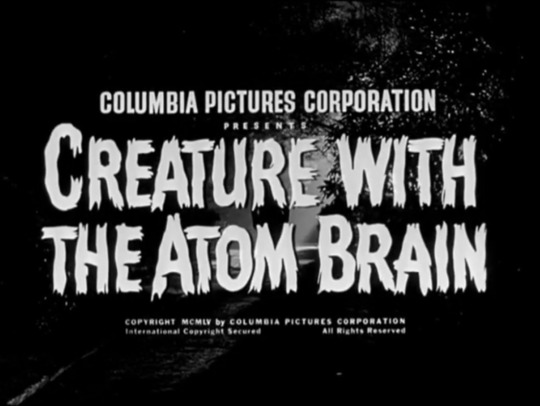
Creature with the Atom Brain
With a title like that, I don't think I need to justify featuring this movie on an MST3K blog, but it does star Richard Denning from The Black Scorpion and Saul John Launer of I Was a Teenage Werewolf, and was directed by Edward L. Cahn of The She-Creature. Writer Curt Sidomak managed to avoid MST3K but contributed to several previous Episodes that Never Were as well. The movie's loopy atomic zombies plot is pure 50's shlock and couldn't be better suited to playing in front of Joel and the bots.
Mobster Frank Buchanan is out of prison and determined to put the hurt on everybody who ever betrayed him. To this end he has recruited a mad scientist, Dr. Wilhelm Steigg, to build him an army of remote-control radioactive zombies. Forensic pathologist Dr. Chet Walker figures out this ploy surprisingly quickly, and even more surprisingly manages to convince the local government and military of the nature of the problem. Walker and the police track Buchanan and Steigg down to their lead-lined lair, but the cops and military together might still not be a match for the criminals' entire undead army!

Creature with the Atom Brain is a curious movie to try to review. Overall it is very competently made – the photography is good, the characters can be told apart and I remember their names, the actors and direction are serviceable, the effects are all right. Nothing stands out as spectacular, but none of it is particularly bad, either, and while it never quite realizes actual horror it is nevertheless tense and entertaining. It has all the qualifications to be a real movie... while still being about a mobster with an army of remote-control radioactive zombies. The only thing I can think of to compare it to is Fiend Without a Face, in that it's an earnest attempt but the subject matter makes it impossible to take seriously.
But you know what? Let's pretend we are taking it seriously. What does Creature with the Atom Brain have to say? I would argue that it's a movie about our culture's relationship with death and the dead.
Obviously, people are afraid of dying – although the world is full of religious traditions that offer a variety of answers, we really don't know if there's an afterlife or what form it might take. Even if you're, say, a Christian, you hope to go to heaven but depending on various factors hell and purgatory are also options. If you're a Hindu or a Buddhist, you're fairly sure you'll be reincarnated, but as who or what you'll never know until you get there. The Undiscovered Country is the ultimate unknown, which makes it a terrifying prospect.
But Creature with the Atom Brain is not about what happens to our minds or souls or whatever you want to call those. It's about what happens to the body, which has equal potential to horrify. Remember when there were the news stories about covid victims stored in refrigerated trucks, and this was presented as something awful instead of a practical solution to funeral homes running out of space? As much as we are afraid of what will become of our souls, we are also terrified that our bodies will suffer disrespect after our deaths, when we're not there to look after them anymore.

When Dr. Steigg set out to create his remote control zombies, his intention was to use them essentially as robots, as substitutes that could do jobs too dangerous or difficult for normal living people. This isn't a bad idea in principle, and nowadays we do use machines for a number of such tasks. Yet when we watch Steigg explain this to Buchanan, we shudder. The horror in the idea comes from the thought that our bodies might be used for such a thing. This is not what we want for our mortal remains – we would prefer to sleep quietly in the grave or be quickly destroyed in the crematory.
A comparable situation actually existed in the early to mid nineteenth century, and you may be familiar with it if you've studied medical history or seen any of a number of Burke and Hare movies. Anatomists and medical students needed human cadavers to dissect, but the only ones legally available to them were those of executed criminals. In the UK at that time you could be hanged for just about anything, but that still wasn't enough bodies – so grave robbers known as 'resurrection men' would dig up corpses and sell them to meet the demand. People were terrified that their own bodies or those of their loved ones would end up on the dissecting table, and went to all sorts of lengths to try to protect graveyards from these depredations.
The interesting thing here is that this attitude has since changed. Nowadays many people voluntarily donate their bodies to science or medicine, so that what was once considered a horrific fate is now a common practice. I don’t have room here to discuss why this changed, but the point is that it did – that suggests to me that in the world of this movie, having your corpse work in a mine or a condemned building after your death would eventually not be seen as so terrible. It would be like donating your organs, a way you can help others even after your own death.
Creature with the Atom Brain doesn't consider this possibility. It only wants to horrify, and in order to do that it considers the worst possible outcome of such a situation – what if you met the zombified version of somebody you'd known while they were alive, and didn't realize it? Early in the film, we meet Dr. Walker's friend and colleague, detective David Harris. Harris is close to the entire Walker family, particularly seven-year-old Penny, who calls him 'Uncle Dave'. Steigg and Buchanan set out to murder and zombify Walker himself, since he is the greatest threat to their operation, but end up getting Harris by mistake because he was driving Walker's car. Rather than try again, they decide to use his reanimated corpse as a spy.

This entails sending him to the Walker house to get information from Mrs. Walker and Penny. The two can tell that there's something wrong with Harris (the worst moment is when Penny takes his hand and observes how cold it is) but assume that he must be ill or that there is some other ‘normal’ explanation. So does everybody else, until it's almost too late. The zombie Harris represents the ultimate disguise for Buchanan and Steigg, which must be an intentional motif because earlier in the movie Buchanan had another zombie identify itself by his name, so that his enemies will know whose revenge this is.
This goes back to the idea of our bodies being misused. When we no longer have control over our remains or our image, what might others do with them? This is becoming a particularly worrying idea in the twenty-first century, as we learn to create what might be considered digital zombies. Would Audrey Hepburn have approved of her image being recreated for a chocolate commercial? Would Sir Lawrence Olivier have accepted the role of the villain in Sky Captain and the World of Tomorrow if he'd still been alive? Would Robert Kardashian have liked having Kanye West as a son-in-law? We don't know and we can't ask them, but we can put whatever words in their mouths we like.
(The issue of how one's image might be altered after death is also an important one to trans people. This is not relevant to the movie and even if it were, I don't feel qualified to discuss it here, but nor do I want to seem like I’m ignoring it. For a brief discussion of trans rights and death, check out Caitlin Doughty's video on the subject here.)
One thing it's interesting that the movie does not do is ever have the zombies turn on their masters. Poor murdered Harris would have been the perfect character to do this with, since he has an emotional connection to the people around him that the other corpses, those of dead criminals, do not. Since he was zombified sooner after death than the others, they could even offer a quasi-scientific justification. Yet the story never goes there. Zombie-Harris behaves as a programmed machine until the equipment controlling him is destroyed, whereupon he and the others simply keel over. These corpses have no memory or initiative of their own. If there is a soul, it has departed and cannot be retrieved. This is emphasized by the way Steigg and Buchanan talk about their creations – they call them 'creatures', not 'men' or 'people'.

At the end of the film, Walker and his wife celebrate Penny's birthday, with the gift of a new doll supposedly from Uncle Dave to replace the one the zombie destroyed. Penny asks why Uncle Dave couldn't come to the party himself, and her parents tell her that he had to go away for his work. This struck me as odd, because it's one thing to not tell her that Uncle Dave became a zombie under the bad guys' control, but quite another not to tell her that Uncle Dave has passed away. Death is an inevitability, and children will eventually need to learn this (I had a room-mate who used to say God made hamsters in order to teach small children about death). When Penny is older, she will doubtless figure out the real reason Uncle Dave wasn't there for her birthday, and she may resent her parents lying to her.
This is the core of the movie's theme, which is that death is something we do not wish to confront. When the dead are up and walking around, or indeed laid out on the dissecting table with their organs being taken apart, we cannot ignore them anymore. The zombies of Creature with the Atom Brain literally look their victims in the eye and force them to stare down their own mortality. Peace is restored when the dead return to their graves and we can go back to pretending they do not exist, as the Walkers do at Penny's party.
The great thing about Creature with the Atom Brain is that you can watch it with this in mind, or you can just turn your brain off for a silly movie about remote-control radioactive zombies. I enjoy it in both capacities.
#mst3k#reviews#episodes that never were#creature with the atom brain#50's#everybody do the zombie stomp
10 notes
·
View notes
Text
John Launer, Medically unexplored stories, 85 Postgrad Med J 503 (2009)
If you have been reading medical journals over the last couple of years, you will almost certainly have read about ‘‘medically unexplained symptoms’’—sometimes abbreviated to MUS. The term was first proposed over 20 years ago, but recently it has grown in popularity and in some places it is taking over from similar and overlapping terms such as somatisation, psychosomatic disorders, frequent consulters, ‘‘fat file’’ patients, and so on. Its use has now spread from researchers and clinicians to managers and health service commissioners. If you work in the UK, someone in your speciality or your area will almost certainly be looking into the possibility of identifying patients with MUS and setting up a dedicated service to relieve their distress and save money for the National Health Service.
At first sight, this way of categorising certain symptoms or patients looks highly attractive. Most clinicians, whatever their field, will readily admit to seeing a proportion of patients for whom it is difficult to assign any diagnosis—or where patients will not accept the diagnosis on offer (most doctors appear to estimate this applies to 15–30% of consultations). Saying that someone has MUS is clearly preferable to calling them a difficult patient or a ‘‘heartsink’’ one. More pertinently, there are now quite a few studies showing that if you separate such people from the bulk of your patients and offer them certain kinds of interventions, they may improve. These interventions include cognitive behaviour therapy (CBT)1 and multimodal programmes of stepped care including drug treatment.2
The evidence provided by these studies is convincing—at least when judged in terms of their own implicit assumptions. At the same time, I want to argue that the definition of ‘‘medically unexplained symptoms’’ is highly problematical. It may offer no significant advance on the whole range of terms that are now becoming obsolete. It may even lead us down a medical blind alley.
The Nature of Explanation
As everyday experience shows, almost all the explanations that doctors offer their patients are only ever partial in their nature. For example, we may tell people that their symptoms are due to thrush, or fibroids, or osteoarthritis of the hip, and these all count as a kind of explanation. But if patients question us as to why they got this particular condition and not another, or why they got it this week and not last month, we are at a loss. Our explanations, in other words, are generally ‘‘proximal’’ rather than ‘‘distal’’ ones: it is usually the patients themselves who decide what the distal ones are, often attributing these to things such as life events or stress at work. With consider- able frequency, we also tell people that our diagnosis is far from certain but suggest they try a particular treatment as an experiment. If it works (as it often does) we may be none the wiser as to whether they actually had the condition we suspected, or would have got better anyway.
We can deconstruct the notion of medical explanation even further. To give a classic example: when I was in my late 30s I had an episode of severe chest pain that was diagnosed variously as a myocardial infarction, viral myocarditis and oesophagitis. After I recovered, I lived with this uncertainty for around nearly 20 years until the pain recurred. I then had a battery of further tests that first of all ruled out any possibility of a past ischaemic event, and then ‘‘conclusively’’ confirmed it. I am currently taking my b-blockers and ACE inhibitors like a well behaved patient, but who knows what future investigative technology may ‘‘prove’’ when I next see a cardiologist? Such explanatory twists and turns, I suggest, are extraordinarily common, especially if we examine people’s past medical notes carefully. If we do so, we will also find disease labels that are now totally discredited and obsolete, as well as diagnoses that we still recognise but would no longer apply in the same way. ‘‘Medically explained symptoms’’, in other words, may not be quite what they seem.
Slippery Ground
If we move on from the word ‘‘explained’’ to the word ‘‘symptoms’’, we are on even more slippery ground. Patients very rarely bring us symptoms as such. What they bring instead are words and stories, and they point to parts of their bodies that they experience as causing trouble. We as doctors then reframe their narrative accounts and gestures into what we call symptoms. In doing so, we are taking over their experiences and transmuting them into our own familiar forms. But something is always lost in translation. The affect, the meaning, the signification and the entire set of personal contexts that goes with their words and gestures will always remain theirs and can never become ours. Our efforts at interpretation may have a pragmatic purpose, and even a beneficial result, but at a philosophical level we have not actually ‘‘explained’’ anything, let alone everything. We have simply assigned a medical description in place of an individual one.
In some circumstances this barely matters. However, in a large proportion of encounters between doctors and patients it matters a lot. This clearly applies to the cases that are now being labelled as MUS, but it also applies to any interaction where patients feel that they have not been fully understood, or where there has not been enough time to hear them out. The term MUS implies that most medical encounters represent a complete meeting of minds, but there is a lot of evidence from research into the medical consultation to suggest this is untrue. In other words, concentrating on MUS focuses our attention on a supposedly aberrant group of patients whom we as doctors find irksome, but it distracts us from noticing what is deficient in our interactional skills more generally.
The Contest of Interpretations
In a brilliant paper entitled ‘‘Explaining medically unexplained symptoms’’, the Canadian psychiatrist and anthropologist Laurence Kirmayer moves the focus away from MUS to what he calls ‘‘the contest of interpretations’’.3 He argues that the narrow focus of the typical clinical encounter does not allow most patients enough time to construct a meaningful narrative about their symptoms. He quotes research that challenges the assumption that patients with unexplained symptoms have ‘‘hidden’’ psychological problems, or are resistant to accepting that their problems may have psychological aspects to them. He describes how physicians respond with physical interventions even when patients neither request nor want this. He speculates that this is due to the way physicians avoid emotional distress, lack strategies to engage with patients’ psychosocial problems, and attempt to maintain authority in the face of ambiguous conditions. He suggests that training doctors to address psychosocial dimensions and manage their own feelings of incompetence might improve the outcome for patients.
Significantly, Kirmayer does not look for solutions in treatments for the patient. He argues instead that the responsibility for a change in behaviour rests with us as doctors. ‘‘One of the basic tasks of the clinical encounter’’, he argues, ‘‘is the co-construction of meaning for distress... Only through dialogue, negotiation and cultural exchange can clinicians find explanations that make sense to patients and their families.’’ Perhaps, after all, we should continue to use the abbreviation but acknowledge what it really stands for— medically unexplored stories.
References
Hatcher S, Arroll B. Assessment and management of medically unexplained symptoms. BMJ 2008;336:1124–8.
Smith RC, Lyles JS, Gardiner JC, et al. Primary care clinicians treat patients with medically unexplained symptoms: a randomized controlled trial. J Gen Int Med 2006;21:671–7.
Kirmayer L. Explaining medically unexplained symptoms. Can J Psychiatry 2004;49:663–72.
#medicine#diagnosis#medically unexplained symptoms#narrative#doctor-patient relationship#somatization#mind-body connection#national health service#united kingdom#holistic health care
0 notes
Text
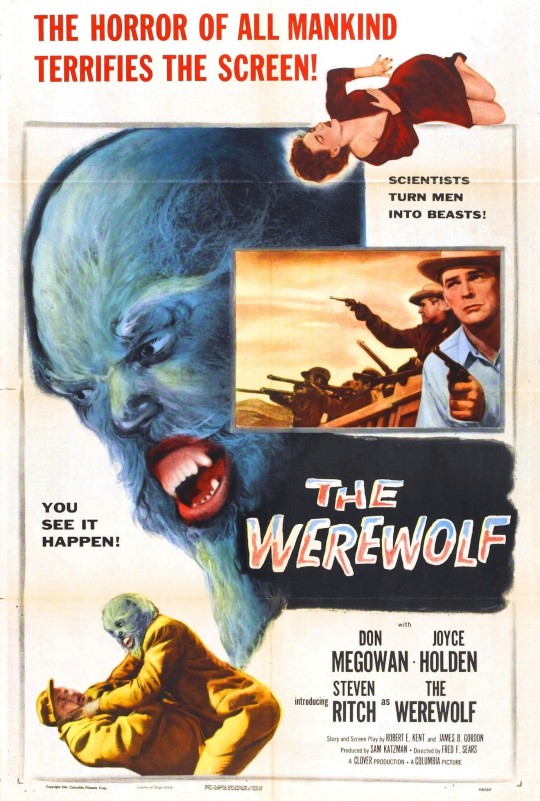

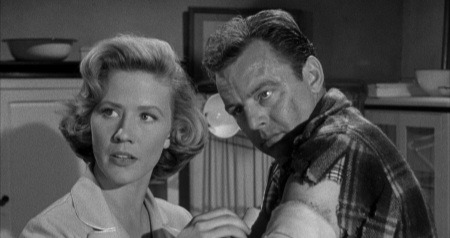




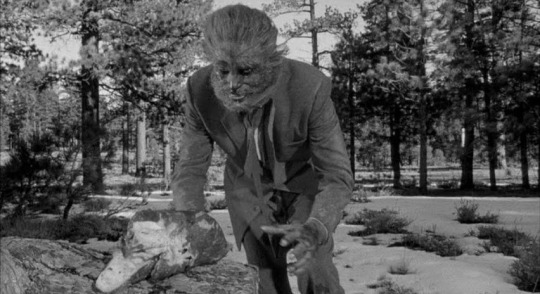


The Werewolf (1956)
"Pity people can't get themselves killed and chewed up during the daytime. Man my age needs his sleep. Mm, pretty bad lacerations, Clovey. What's the matter? Wouldn't she kiss you?"
"Wasn't in a kissing mood, Doc."
#the werewolf#wolfmania#1956#american cinema#b movie#creature feature#sam katzman#fred f. sears#robert e. kent#james b. gordon#don megowan#joyce holden#steven ritch#harry lauter#kim charney#eleanore tanin#larry j. blake#ken christy#s. john launer#james gavin#george lynn#george cisar#absurd premise aside (evil atom age scientists blast a rando with radiation‚ turning him into a werewolf‚ as part of their plan to#inoculate against radiation...?) this is a fairly plodding b movie with a little too much forming of mobs and hunting to and fro. it is tho#shot with a level of style and atmosphere not always found in creature features (Sears did the same to sell Earth vs the Flying Saucers)#and it succeeds in the most important part of any werewolf film: the pathos. more than any other horror film monster the werewolf is an#archetype of tragedy and loss of self‚ and the films only work when they lean into that. thankfully this film does‚ and Ritch delivers a#suitably tormented performance as the poor innocent whose life has been destroyed by‚ uh‚ radiation enthusiasts (?)
6 notes
·
View notes
Text
CREATURE WITH THE ATOM BRAIN (1955) Reviews and overview
CREATURE WITH THE ATOM BRAIN (1955) Reviews and overview
‘Chock-full of thrills!’
Creature with the Atom Brain is a 1955 science fiction crime horror film about a mad scientist who uses ‘zombies’ to aid a gangster.
Directed by Edward L. Cahn (The Four Skulls of Jonathan Drake; Curse of the Faceless Man; It! The Terror from Beyond Space; Invasion of the Saucer Men; Zombies of Mora Tau; Voodoo Woman; The She-Creature) from a story and screenplay by Curt…
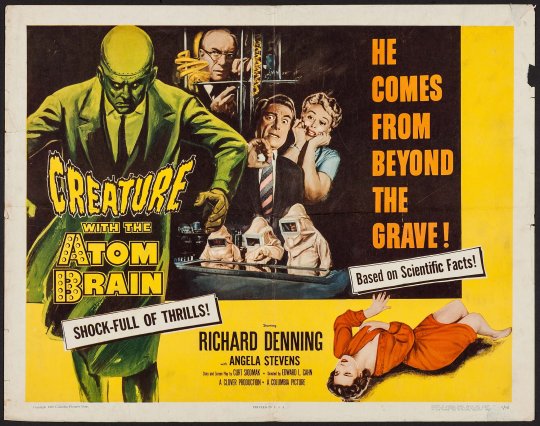
View On WordPress
#1955#Angela Stevens#Creature with the Atom Brain#Edward L. Cahn#review reviews#Richard Denning#S. John Launer#sci-fi horror
1 note
·
View note
Text
Some of the Best Luxury Leather Wallets for Men Available in the UK
Forget the designer brands, most of them mass produce in Asia to cater for their global marketplace. For truly top-notch luxury leather wallets for men, look to the companies listed below.
1) Smythson
Although 125 years old, Smythsons languished for much of its history, including a spell as a subsidiary of John Menzies, the newsagents, until a management buyout in 1998 became a catalyst for the establishment of a forward-looking modern luxury brand, with a heritage to draw on. With its stationary lines now secondary to its leather goods, Smythsons offers a range of wallets that value simplicity and quality of manufacture over design, innovation, or gimmicks. They have three Royal Warrants, and their wallets are built to last a lifetime.
Pick of the pack: Panama 8 card calfskin wallet £175.
2) Pickett
Established in the 1980s by Trevor Pickett, Pickett’s website doesn’t invoke the quality of it’s products. With its shops in London’s Sloane Street and the Burlington Arcade however, Pickett sells an extensive range of high-grade British leather goods, alongside Pachminas and other accessories. They dabble in exotic leathers, including lambskin, ostrich, lizard and crocodile, and their wallets are simple, elegant, and understated, often employing two colours, and with just few models to choose from.
Pick of the pack: Lambskin 8 card short wallet £175.
3) Ettinger
Holders of the Prince of Wales’ Royal Warrant, Ettinger is a family business founded in the 1930’s that is equally keenly aware of the past and the future. Since having purchased James Homer Ltd, a former saddler business of leather craftsman, in 1999, the company has gone from strength to strength. It’s products are in collections, some collaborations with other luxury brands such as Bentley and Wimbledon, and the brand is defined by its combinations of different colours. Cutting edge concept and design combined with master craftsmanship comes at a cost though – though less than an actual Bentley, to be fair.
Pick of the pack: Saint Crispin Bracken & Eggshell 6 card wallet £166.67.
4) Tusting
Tusting is a fifth generation family business that produces a range of classic leather luggage and accessories. The wallets are handmade in their English workshop, with leather from Scandinavia, America, England and South Africa. Sticking to more conservative choices colour-wise, the emphasis is firmly on the more traditional customer – although they do make iPad and iPhone sleeves – and the quality is as good as any. A safe choice for a fine traditional wallet.
Pick of the pack: 8 card wallet in black and natural £129.
5) Launer
Founded by a Czech immigrant after the second world war, Launer has made a name for itself as ‘the Queen’s handbag maker’. Launer’s wallets are very high quality, and are manufactured at Walsall, near Birmingham, the traditional home of the English leather industry. While there’s no doubting the quality, attempts to modernise the range look a bit clumsy. A good choice for a no frills classic nonetheless.
Pick of the pack: 8 card wallet £154
So for the best luxury leather wallets for men, look out for the above brands – or of course you could try some of the new generation of upstart competitors.
Source by Hugo Lesser
Source: http://bitcoinswiz.com/some-of-the-best-luxury-leather-wallets-for-men-available-in-the-uk-4/
0 notes
Text
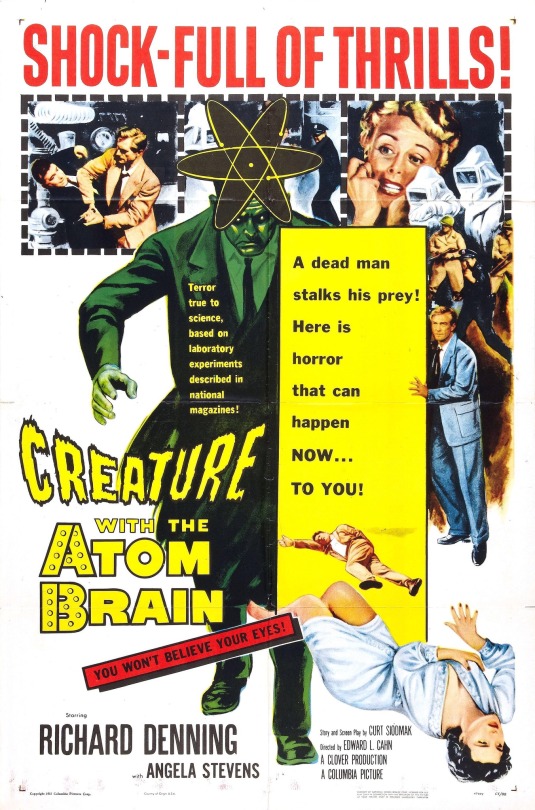
Chris: Catching up on my Svengoolie recordings: this film was a sleeper and a soul-sucker, to be avoided at all costs. When the only redeeming factor for a film is the appearance of the governor from Hawaii Five-O, skip it, Avoid.
1 note
·
View note
Text
Some of the Best Luxury Leather Wallets for Men Available in the UK
Forget the designer brands, most of them mass produce in Asia to cater for their global marketplace. For truly top-notch luxury leather wallets for men, look to the companies listed below.
1) Smythson
Although 125 years old, Smythsons languished for much of its history, including a spell as a subsidiary of John Menzies, the newsagents, until a management buyout in 1998 became a catalyst for the establishment of a forward-looking modern luxury brand, with a heritage to draw on. With its stationary lines now secondary to its leather goods, Smythsons offers a range of wallets that value simplicity and quality of manufacture over design, innovation, or gimmicks. They have three Royal Warrants, and their wallets are built to last a lifetime.
Pick of the pack: Panama 8 card calfskin wallet £175.
2) Pickett
Established in the 1980s by Trevor Pickett, Pickett’s website doesn’t invoke the quality of it’s products. With its shops in London’s Sloane Street and the Burlington Arcade however, Pickett sells an extensive range of high-grade British leather goods, alongside Pachminas and other accessories. They dabble in exotic leathers, including lambskin, ostrich, lizard and crocodile, and their wallets are simple, elegant, and understated, often employing two colours, and with just few models to choose from.
Pick of the pack: Lambskin 8 card short wallet £175.
3) Ettinger
Holders of the Prince of Wales’ Royal Warrant, Ettinger is a family business founded in the 1930’s that is equally keenly aware of the past and the future. Since having purchased James Homer Ltd, a former saddler business of leather craftsman, in 1999, the company has gone from strength to strength. It’s products are in collections, some collaborations with other luxury brands such as Bentley and Wimbledon, and the brand is defined by its combinations of different colours. Cutting edge concept and design combined with master craftsmanship comes at a cost though – though less than an actual Bentley, to be fair.
Pick of the pack: Saint Crispin Bracken & Eggshell 6 card wallet £166.67.
4) Tusting
Tusting is a fifth generation family business that produces a range of classic leather luggage and accessories. The wallets are handmade in their English workshop, with leather from Scandinavia, America, England and South Africa. Sticking to more conservative choices colour-wise, the emphasis is firmly on the more traditional customer – although they do make iPad and iPhone sleeves – and the quality is as good as any. A safe choice for a fine traditional wallet.
Pick of the pack: 8 card wallet in black and natural £129.
5) Launer
Founded by a Czech immigrant after the second world war, Launer has made a name for itself as ‘the Queen’s handbag maker’. Launer’s wallets are very high quality, and are manufactured at Walsall, near Birmingham, the traditional home of the English leather industry. While there’s no doubting the quality, attempts to modernise the range look a bit clumsy. A good choice for a no frills classic nonetheless.
Pick of the pack: 8 card wallet £154
So for the best luxury leather wallets for men, look out for the above brands – or of course you could try some of the new generation of upstart competitors.
Source by Hugo Lesser
Source: http://bitcoinswiz.com/some-of-the-best-luxury-leather-wallets-for-men-available-in-the-uk-3/
0 notes
Text
Some of the Best Luxury Leather Wallets for Men Available in the UK
Forget the designer brands, most of them mass produce in Asia to cater for their global marketplace. For truly top-notch luxury leather wallets for men, look to the companies listed below.
1) Smythson
Although 125 years old, Smythsons languished for much of its history, including a spell as a subsidiary of John Menzies, the newsagents, until a management buyout in 1998 became a catalyst for the establishment of a forward-looking modern luxury brand, with a heritage to draw on. With its stationary lines now secondary to its leather goods, Smythsons offers a range of wallets that value simplicity and quality of manufacture over design, innovation, or gimmicks. They have three Royal Warrants, and their wallets are built to last a lifetime.
Pick of the pack: Panama 8 card calfskin wallet £175.
2) Pickett
Established in the 1980s by Trevor Pickett, Pickett’s website doesn’t invoke the quality of it’s products. With its shops in London’s Sloane Street and the Burlington Arcade however, Pickett sells an extensive range of high-grade British leather goods, alongside Pachminas and other accessories. They dabble in exotic leathers, including lambskin, ostrich, lizard and crocodile, and their wallets are simple, elegant, and understated, often employing two colours, and with just few models to choose from.
Pick of the pack: Lambskin 8 card short wallet £175.
3) Ettinger
Holders of the Prince of Wales’ Royal Warrant, Ettinger is a family business founded in the 1930’s that is equally keenly aware of the past and the future. Since having purchased James Homer Ltd, a former saddler business of leather craftsman, in 1999, the company has gone from strength to strength. It’s products are in collections, some collaborations with other luxury brands such as Bentley and Wimbledon, and the brand is defined by its combinations of different colours. Cutting edge concept and design combined with master craftsmanship comes at a cost though – though less than an actual Bentley, to be fair.
Pick of the pack: Saint Crispin Bracken & Eggshell 6 card wallet £166.67.
4) Tusting
Tusting is a fifth generation family business that produces a range of classic leather luggage and accessories. The wallets are handmade in their English workshop, with leather from Scandinavia, America, England and South Africa. Sticking to more conservative choices colour-wise, the emphasis is firmly on the more traditional customer – although they do make iPad and iPhone sleeves – and the quality is as good as any. A safe choice for a fine traditional wallet.
Pick of the pack: 8 card wallet in black and natural £129.
5) Launer
Founded by a Czech immigrant after the second world war, Launer has made a name for itself as ‘the Queen’s handbag maker’. Launer’s wallets are very high quality, and are manufactured at Walsall, near Birmingham, the traditional home of the English leather industry. While there’s no doubting the quality, attempts to modernise the range look a bit clumsy. A good choice for a no frills classic nonetheless.
Pick of the pack: 8 card wallet £154
So for the best luxury leather wallets for men, look out for the above brands – or of course you could try some of the new generation of upstart competitors.
Source by Hugo Lesser
Source: http://bitcoinswiz.com/some-of-the-best-luxury-leather-wallets-for-men-available-in-the-uk-2/
0 notes